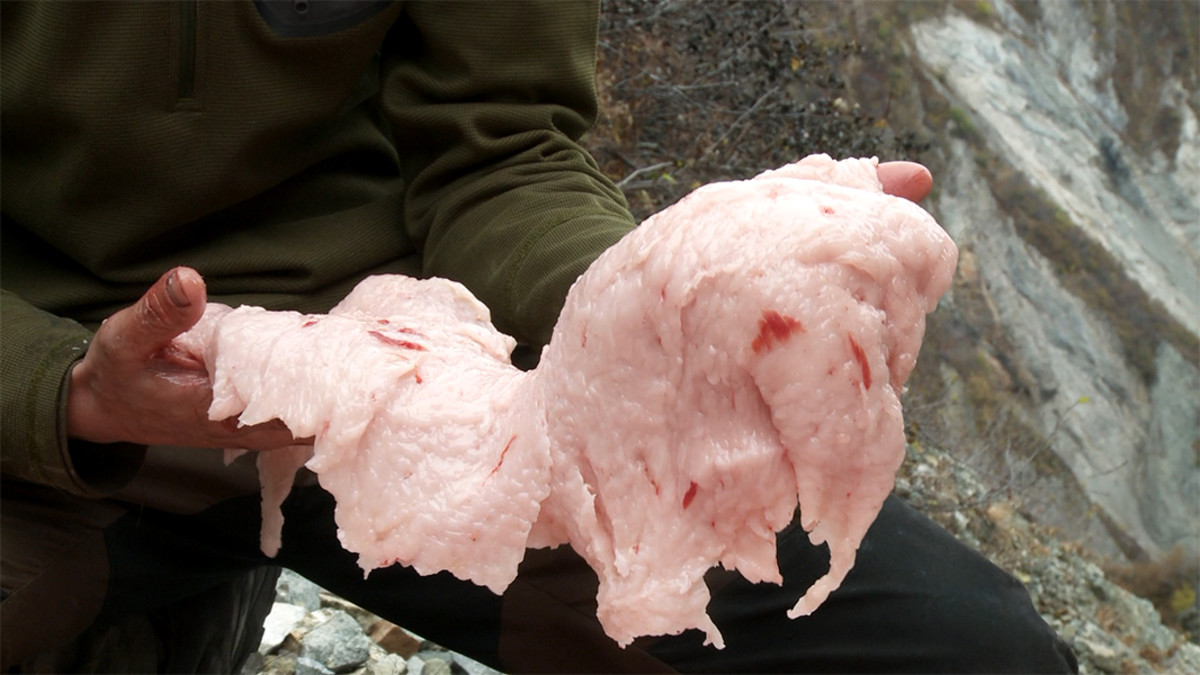Popular searches
Articles
Series
Topics
Shop
Recipes

Sportsman that are lucky enough to harvest a black bear should try rendering the fat from the animal. Once rendered, this lard will become a staple in the house hold for cooking many different meals.
When butchering black bears or wild pigs, if you get a fatty one, it’s very important that you trim away all fat before freezing the meat. The fat will gradually spoil in the freezer and create off-flavors or downright inedible meat.
Rather than discarding the fat, you should consider rendering it into oil. As long as the animal hasn’t been feeding on fish or carrion, the oil will usually be delicious and can be used for any application suitable for lard. It’s a simple process.
- Cube the fat into 1” chunks.
- Put a heavy-bottomed pot over a low burner and add ¼” of cooking oil. Add in a single layer of the fat pieces.
- Once the initial fat pieces start to release oil (You’ll know because the oil in the bottom gets deeper) add in another layer. Keep doing this until you’ve got a couple inches of oil in the bottom. Now it’s safe to add in the rest of the fat, but don’t fill the pot to more than 75% full.
- Let it render on low heat until the oil ceases to sputter and the fat pieces are clear and floating on the top. (This can take several hours.) They should look like cracklings, depleted of oil.
- Skim away the cracklings and any residue that has collected at the surface. Continue cooking until all sputtering and boiling has stopped.
- Let the oil cool, then pour it through a fine wire strainer into glass canning jars. Discard the bottom ½” or so of oil in the pot if it looks cloudy or contains bits of cooked meat, gristle, etc.
- Cap the jars. The rendered oil keeps indefinitely in a freezer. You can also store it in a refrigerator.






Conversation